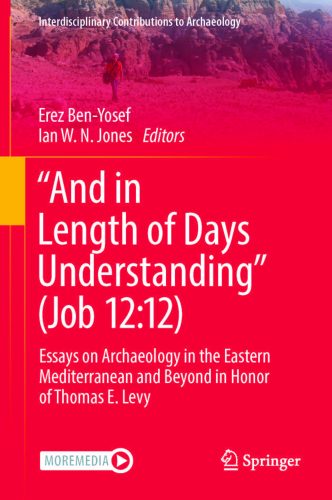
Erez Ben-Yosef • Ian W. N. Jones
Editors
For the ArcGIS StoryMap version of this article, visit
https://bit.ly/NapoleonAcre
or use QR code

“Napoleon’s Hill” and the 1799 Siege of Acre/Akko, Israel
Ann E. Killebrew and Jane C. Skinner
Abstract
Napoleon’s famous 1799 defeat at the walls of Ottoman Acre marked a turning point in the French campaign to control the Middle East, an event that lives on in the memory of the citizens of modern Akko. Visitors to the UNESCO World Heritage Site of Acre, Israel, can follow a walking route exploring several locations that played a key role in Bonaparte’s 1799 siege of the city. In this contribution, we recreate Napoleon’s unsuccessful siege of Acre to examine the role of Tel Akko (“Napoleon’s Hill”) in his defeat. Based on maps dating to the period of the 1799 siege and contemporary eyewitness accounts, we examine the claim that there is no evidence Napoleon ever set foot on Tel Akko. We also employ Esri StoryMaps to present an in-depth investigation and contextualization of Bonaparte’s defeat by British and Ottoman forces, an event which Napoleon, on his deathbed, lamented as the obstacle that prevented his dream of recreating Alexander the Great’s empire.
Keywords Akko · Acre · Napoleon · al-Jazzar · Ottoman
1 The Legend of “Napoleon’s Hill”
Ottoman-period Acre (Akko/Akka) has gone down in history as the city that withstood Napoleon Bonaparte’s 1799 siege during his ambitious, but ultimately unsuccessful, campaign to conquer Egypt, Syria, and the Holy Land. More than 200 years later, Napoleon’s defeat remains a source of local pride and touristic interest. To
of Acre in 1799? In what follows, we explore these questions, beginning with a brief historical overview of the three individuals who led the French, British, and Ottoman forces involved in the siege. This is followed by a review of contemporary primary sources and an analysis of the movements of Napoleon and his army during the siege to determine what, if any, role Tel Akko played in the unsuccessful French attempt to conquer Acre. To supplement and further illustrate the issues covered in this text, we utilize Esri’s ArcGIS StoryMap application at https://bit.ly/NapoleonAcre (Fig. 4). We dedicate this article to Tom Levy, whose ground- breaking work in the use of GIS, advanced 3D imagery, and ArcGIS StoryMap in archaeological research has been an inspiration for our work at Tel Akko (see, e.g., Howland et al., 2020; Levy et al., 2010; Smith & Levy, 2014).
2 Historical Context
2.1 Regional Context
Following the fall of Crusader Acre to Mamluk forces in 1291, this harbor town and other major coastal cities were razed to the ground to prevent any future Christian invasions from the sea. Acre remained largely abandoned for over four centuries and, according to travelers’ accounts, its ruins served as a fishing village (Philipp, 2001, pp. 1–8). Its resettlement and development in the eighteenth century
A. E. Killebrew (*)
Department of Classics and Ancient Mediterranean Studies, Jewish Studies, and Anthropology, The Pennsylvania State University, University Park, PA, USA
e-mail: aek11@psu.edu
J. C. Skinner
Jewish Studies, The Pennsylvania State University, University Park, PA, USA
e-mail: jcs5138@psu.edu
© The Author(s), under exclusive license to Springer Nature Switzerland AG 2023 E. Ben-Yosef, I. W. N. Jones (eds.), “And in Length of Days Understanding” (Job 12:12): Essays on Archaeology in the Eastern Mediterranean and Beyond in Honor of Thomas E. Levy, Interdisciplinary Contributions to Archaeology, https://doi.org/10.1007/978-3-031-27330-8_81